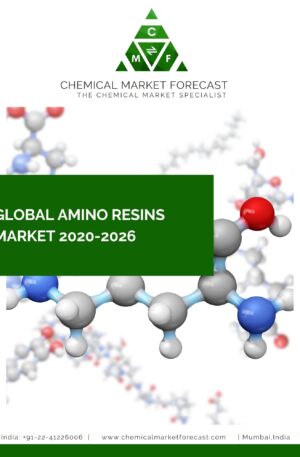Global Water Treatment Chemicals Market
Water treatment chemicals are substances used in the treatment of water to improve its quality and make it safe for various applications, including drinking, irrigation, and industrial processes. These chemicals are used to remove impurities, disinfect the water, and prevent the growth of bacteria and other harmful organisms. The global water treatment chemicals market is driven by several factors, including increasing demand for clean water, rapid urbanization, and growing industrialization.
One of the primary drivers of the water treatment chemicals market is the increasing demand for clean water. The population growth, increasing urbanization, and the growing awareness of the importance of clean water have led to an increase in the demand for water treatment chemicals. Municipal water treatment facilities use these chemicals to remove impurities and make the water safe for consumption.
Another driver of the market is the rapid industrialization. Industries such as power generation, food and beverage, and chemical manufacturing require large quantities of water for their processes. Water treatment chemicals are used to remove impurities, prevent corrosion, and ensure the water meets the required standards for industrial processes.
One of the primary restraints for the water treatment chemicals market is the environmental concerns associated with the use of these chemicals. The discharge of chemicals used in the water treatment process can have a negative impact on the environment, affecting aquatic life and ecosystems. As a result, several countries have implemented regulations on the use of water treatment chemicals, which may hinder the growth of the market.
Another restraint for the water treatment chemicals market is the increasing popularity of alternative water treatment technologies, such as ultraviolet disinfection and membrane filtration. These technologies offer several advantages over chemical treatment, including lower chemical usage, reduced environmental impact, and improved water quality.
The water treatment chemicals market can be segmented based on product type, application, and geography. Based on product type, the market can be divided into coagulants and flocculants, corrosion inhibitors, disinfectants and biocides, pH adjusters, and others. The coagulants and flocculants segment is expected to dominate the market due to its widespread use in municipal and industrial water treatment.
Based on application, the market can be segmented into municipal water treatment, industrial water treatment, and wastewater treatment. The industrial water treatment segment is expected to hold the largest share of the market due to the increasing demand from industries such as power generation, food and beverage, and chemical manufacturing.
Geographically, the market can be segmented into North America, Europe, Asia-Pacific, Latin America, and the Middle East and Africa. Asia-Pacific is expected to be the largest market for water treatment chemicals due to the rapid industrialization and the growing demand for clean water in the region.
There are several key suppliers of water treatment chemicals in the global market, including BASF SE, Dow Chemical Company, Ecolab Inc., AkzoNobel N.V., Solenis LLC, Lonza Group AG, Kemira Oyj, SUEZ Water Technologies & Solutions, SNF Group, and Kurita Water Industries Ltd. These companies offer a diverse range of water treatment chemicals, including coagulants and flocculants, corrosion inhibitors, disinfectants and biocides, pH adjusters, and others. They serve various end-use industries, such as municipal water treatment, industrial water treatment, and wastewater treatment. These key suppliers of water treatment chemicals focus on innovation and sustainability, developing chemicals that are effective and have minimal impact on the environment. They also offer technical support and customized solutions to their customers, ensuring that their chemicals meet their specific requirements.
membranes are used in processes such as reverse osmosis (RO), ultra filtration (UF), and microfiltration (MF), to purify water and remove contaminants. In the biotechnology industry, membranes are used for a range of applications, such as filtration of biological fluids, separation of cells, and purification of proteins. Membranes are also used in fuel cells, gas separation, and other industrial processes.
Membranes can be made from a variety of materials, including, Polymers: Polyvinyl chloride (PVC), Polyethylene (PE), Polypropylene (PP), Polytetrafluoroethylene (PTFE). Composites: Asymmetric composite, Ceramic-polymer composites. Metals: Stainless steel, titanium. Ceramics: Alumina, Zirconia. Natural Materials: Cellulose, proteins (e.g. silk) The choice of raw material depends on the specific application and the desired properties of the membrane, such as porosity, stability, chemical resistance, and cost.
Although membranes have many advantages, there are also some disadvantages to using them, includes, accumulation of impurities on the membrane surface can reduce its performance and efficiency, leading to frequent cleaning and maintenance. Depending on the specific application, the lifespan of a membrane can be limited, requiring frequent replacement
There are many suppliers of membranes, with some of the key companies including, Dow Chemical, Hydranautics, Pentair, Toray Industries, GE Water & Process Technologies, Asahi Kasei, Koch Membrane Systems, SUEZ Water Technologies & Solutions, The Lubrizol Corporation, Mitsubishi Rayon Co., Ltd. This list is not exhaustive, and there are many other companies that manufacture and supply membranes for various applications. It’s important to note that the specific suppliers may vary depending on the type of membrane and the industry it’s being used in.
Membrane technology is widely used in various industries, and some of the key regions for the production and use of membranes include, North America: United States and Canada. Europe: Germany, France, UK, and Italy. Asia Pacific: China, Japan, South Korea, and India. Middle East and Africa: UAE, Saudi Arabia, South Africa. Latin America: Brazil, Mexico. In each of these regions, there are a number of companies involved in the manufacture, supply, and installation of membranes for various applications such as water treatment, desalination, gas separation, and biopharmaceuticals. Additionally, the demand for membranes is growing in developing countries as well, driven by factors such as population growth, urbanization, and increasing industrialization.






Reviews
There are no reviews yet.